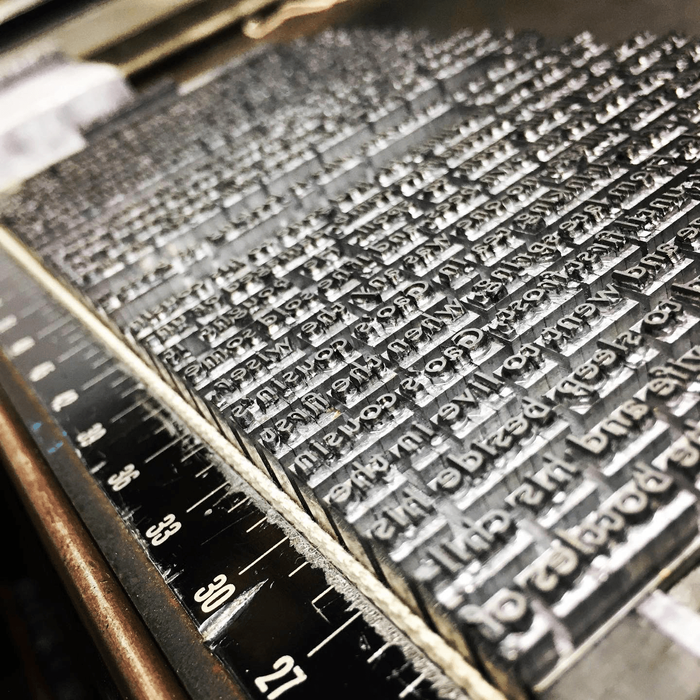In ancient Greece areté was the notion of excellence of any kind. It was bound up with the act of living to one’s full potential and is the root of the English word art.
Our aim is to make books to our full potential.
Areté Editions was started in 2020 when publisher, film maker and writer Marcelo Anciano met letterpress printer Phil Abel.
Marcelo: ‘I had suggested to the artist Gary Gianni that we work on another book together, just for us, and find a story that he felt he could doodle with and that I could design. He chose a short story by Neil Gaiman. After the project became a book, I asked Neil if we could publish it and he was graciously enthusiastic.
‘I was originally going to do the book with an established publisher, and also I was going to produce, for myself and Gary, twenty-six lettered copies that I wanted to have handmade. I found Phil’s Hand & Eye Editions online and when he saw the project he suggested we typeset the whole edition in hot metal, make relief plates for the illustrations and print it all letterpress.
‘Areté Editions was born.’
Phil: ‘Marcelo came along just after I realised that the Covid-19 pandemic meant that the best way forward for Hand & Eye was to concentrate on printing books. I had two projects of my own under way and also a commission from Lyra’s Books and Ludlow Bookbinders to print their edition of Neil Gaiman’s Stardust. Quite by chance, the time to send them proofs coincided with a holiday a few miles from Ludlow. I went to see them to discuss the proofs and was shown round their immensely impressive premises. I knew then that they were exactly the right people to bind our books.'
Gary: 'Upon reading Death and Honey for the first time, I remember being exhilarated by the scope and vitality of the short story. This was years ago, well before I ever thought about creating dozens of pictures for Neil Gaiman’s Sherlock Holmes adventure. The initial enjoyment of the reading experience raises a question I wrestle with from time to time.
'Why illustrate good literature?
'Shouldn’t the communion between the author and the reader be a sacred experience?
'When is it okay for a third party, namely some illustrator like me, to trespass on that sacred ground and weave pictures into the mix? Who can give you reasons? Who can tell you why?
'Fools will give you reasons, wisemen never try.
'Perhaps the monumental production of this one-of-a-kind letterpress book is a fool’s folly; sort of like Fitzcarraldo hauling his 300-ton steamship over a mountain top. It’s this sort of romantic comparison that appeals to artists in general. Thinking about Death and Honey from this perspective gives me some clarity. Maybe there is an answer to the question posed earlier, why illustrate good literature? Aside from the wonderful story, the book itself can be a work of art.
'I’ll speak on behalf of the team of skilled craftsman involved in producing this fine object.
' “We built it out of love for the art form. It has little to do with recognition or money.
'We just wanted to create a beautiful book…” '
Since The Case of Death and Honey we have published Neil Gaiman's Words of Fire, a book of sixteen of his poems with a frontispiece by Bill Sienkiewicz; Frozen Hell by John W Campbell, Jr, illustrated with spectacular paintings and drawings by Gregory Manchess; and The Curious Case of Benjamin Button, illustrated by Dave McKean. We are working with pioneering pop artist Allen Jones on his interpretation of Aldous Huxley's Brave New World.
There’s more that we can’t talk about yet, so if you’d like to hear our news first please join our mailing list.
And there's more about
areté here.



